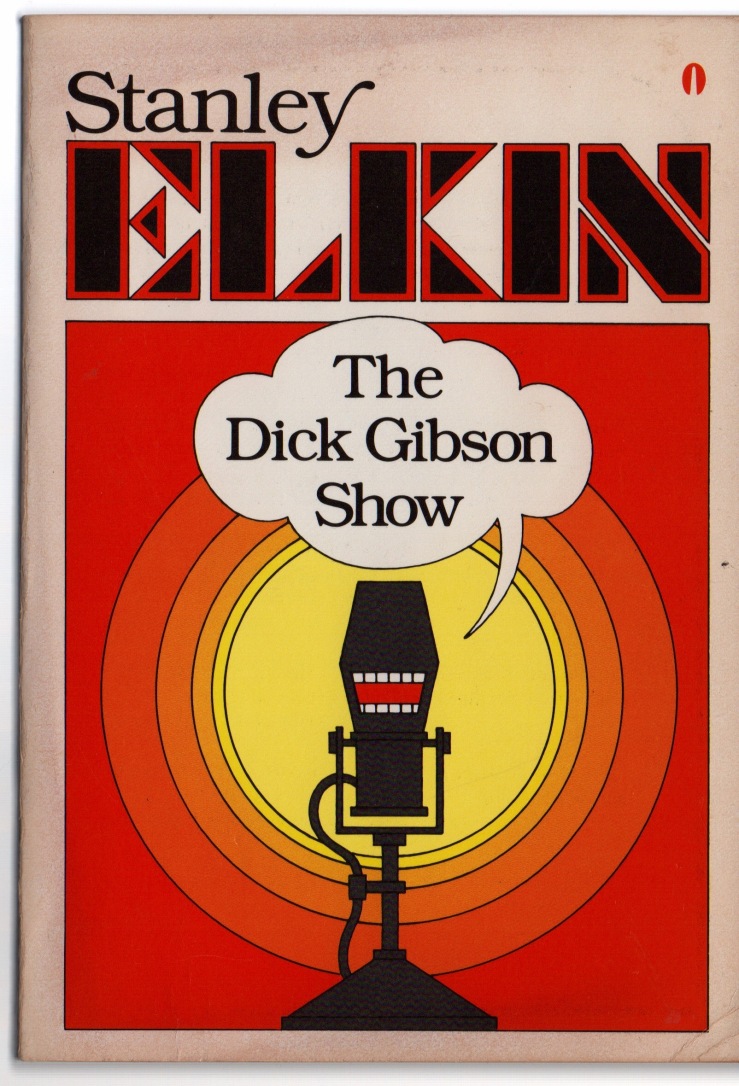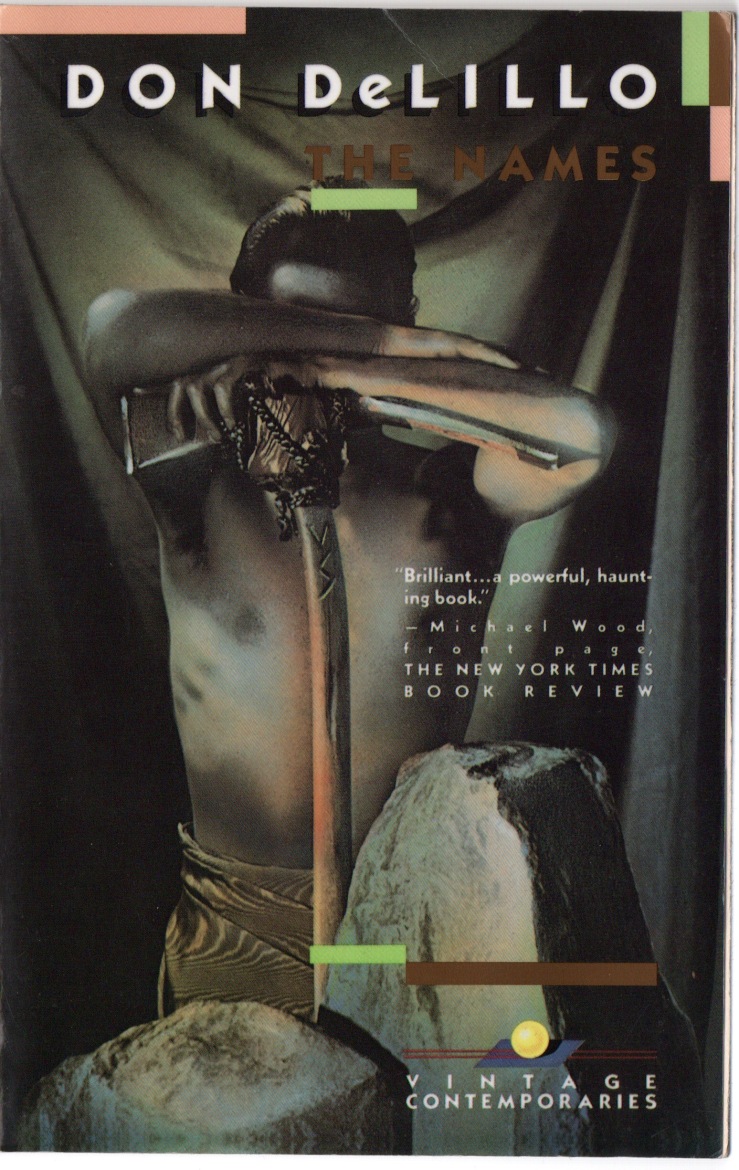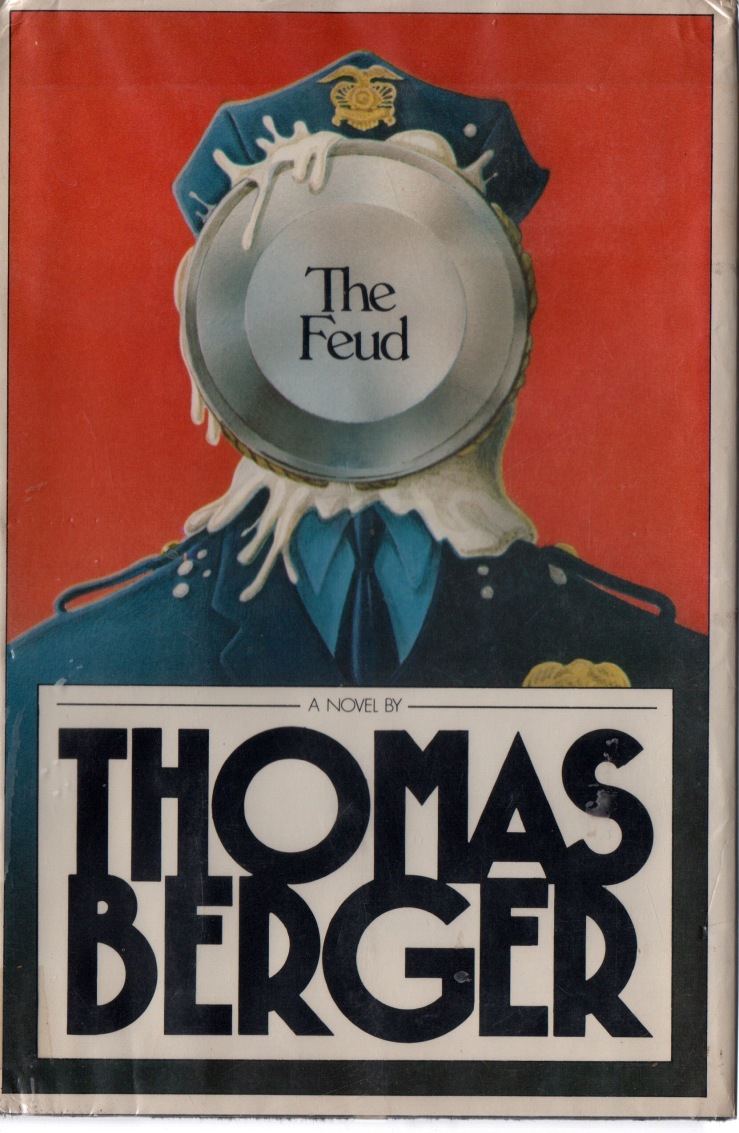[Ed. note: I finished Stanley Elkin’s 1971 novel The Dick Gibson Show a few days ago. I read The Dick Gibson Show immediately after finishing Elkin’s 1976 novel The Franchiser. I want to write something about these novels, which seem of a piece to me, but I also wanted to get a bit more context first, and the most basic of internet searches led me to Elkin’s 1974 interview in The Paris Review with Thomas LeClair.
What follows are selections from the interview in which Elkin kinda sorta analyzes The Dick Gibson Show, providing what I take to be a Very Good and Fascinating Review of the novel.
Look, I went to school for reading books, I learned about the goddamn intentional fallacy and la mort de l’auteur and all that jazz, and I know that the author isn’t supposed to be the goddamn authority on his own work, I know that what follows isn’t a proper review—but I don’t care. I like it.
My assumption is it’s likely that anyone interested enough in a review of The Dick Gibson Show has probably already read Elkin’s Paris Review interview, and would probably prefer, like, something new on the novel. Which I’ll attempt down the line. But for now: Elkin on Elkin—]

INTERVIEWER: I have some questions now about themes or ideas I find in much of your fiction. You have Dick Gibson say, “The point of life was the possibility it always held out for the exceptional.” The heroes in your novels have a tremendous need to be exceptional, to transcend others, to quarrel with the facts of physical existence. Is this a convention—which we’ve just been talking about—or something very basic to your whole view of life?
ELKIN: It is something very basic to my view of life, but in the case of that character it becomes the initial trauma which sets him going. It becomes his priority. Dick Gibson goes on to say that he had believed that the great life was the life of cliché. When I started to write the book, I did not know that was what the book was going to be about, but indeed that is precisely what the book gets to be about as I learned what Dick Gibson’s life meant. Consider the last few pages of the book:
What had his own life been, his interminable apprenticeship which he saw now he could never end? And everyone blameless as himself, everyone doing his best but maddened at last, all, all zealous, all with explanations ready at hand and serving an ideal of truth or beauty or health or grace. Everyone—everyone. It did no good to change policy or fiddle with format. The world pressed in. It opened your windows. All one could hope for was to find his scapegoat . . .
Now, everything that follows this is a cliché:
to wait for him, lurking in alleys, pressed flat against walls, crouched behind doors while the key jiggles in the lock, taking all the melodramatic postures of revenge. To be there in closets when the enemy comes for his hat, or to surprise him with guns in swivel chairs, your legs dapperly crossed when you turn to face him, to pin him down on hillsides or pounce on him from trees as he rides by, to meet him on the roofs of trains roaring on trestles, or leap at him while he stops at red lights, to struggle with him on the smooth faces of cliffs…
and so on. The theme of the novel is that the exceptional life—the only great life—is the trite life. It is something that I believe. It is not something that I am willing to risk bodily injury to myself in order to bring to pass, but to have affairs, to go to Europe, to live the dramatic clichés, all the stuff of which movies are made, would be the great life.
INTERVIEWER: But what if one were aware that they were clichés? Isn’t that what causes so much despair in contemporary fiction—that characters can’t live a life of clichés?
ELKIN: Dick Gibson is aware that they are clichés. What sets him off—what first inspires this notion in him—is his court-martial when he appears before the general and says that he’s taken a burr out of the general’s paw—something that happens in a fairy tale. When Dick realizes what has happened to him, he begins to weep, thinking, oh boy, I’ve got it made—I’m going to have enemies, I’m going to be lonely, I’m going to suffer. That is the theme of that book.
INTERVIEWER: Do the characters in your novels, then, have rather conventional notions of what exceptional is?
ELKIN: Yes, I think so.
Dick can’t stand anybody’s obsession but his own, which is largely the plight of myself and yourself, probably, and everybody. He’s opened a Pandora’s box when he opens his microphones to the people out there. When they find the platform that the Gibson format provides, they just get nuttier and nuttier and wilder and wilder, and this genuinely arouses whatever minimal social consciousness Dick Gibson has. The paradox of the novel is that the enemy that Gibson had been looking for all his life is that audience. The audience is the enemy. Dick builds up in his mind this Behr-Bleibtreau character. That Behr-Bleibtreau is his enemy. That’s baloney paranoia. The enemy is the amorphous public that he is trying to appeal to, that he’s trying to make love to with his voice. Dick Gibson is a bodiless being. He is his voice. That’s why the major scene in the novel is the struggle for Gibson’s voice.
INTERVIEWER: Who is Behr-Bleibtreau? There is a suggestiveness to his name that I can’t articulate.
ELKIN: Neither can I. I used to know a guy named—Bleibtreau. Hyphenating the name made it more sinister than just Bleibtreau itself. You know, you could almost put Count in front of it.
INTERVIEWER: s that why Dick thinks that Behr-Bleibtreau is the enemy—because there is this suggestion of cliché?
ELKIN: That’s right. Behr-Bleibtreau is a charlatan—that’s what he is. He has this theory of the will that is alluded to in the second section of the novel. And he is a hypnotist, exactly the kind of guy who Gibson sees as out to get him. Of course Behr-Bleibtreau isn’t out to get him. When Gibson thinks it is Behr-Bleibtreau calling him from Cincinnati, it isn’t. It’s just Gibson’s own paranoia that creates the conditions for Behr-Bleibtreauism.
INTERVIEWER: Is radio in the novel an index to social change, perhaps the devaluation of language?
ELKIN: That was not my intention. I could make a case that once upon a time there were scripts, a platform and an audience out in front of Jack Benny and Mary Livingstone, that radio then was a kind of art form and now it is an artless form in which you get self-promoters and people with theories about curing cancer by swallowing mosquitoes or something. Language, since it is occurring spontaneously rather than thought out, is devalued. But actually, in real life, modern radio talk shows are much more interesting than The Jack Benny Program ever was because you are getting the shoptalk of personality.
INTERVIEWER: Dick is a professional word man, and by the end he is reduced nearly to silence. Is this your “literature of exhaustion” that Barth talks about, a comment on the futility of language…
ELKIN: No. Certainly not.
INTERVIEWER: He does say less and less as the novel moves along.
ELKIN: Right. And the other people say more and more. That is intentional. But Dick makes an effort to get his program back from the sufferers. He starts hanging up on people. Then he gets the biggest charlatan—Nixon—at the end. Wasn’t I clever to invent Nixon before Nixon did?
INTERVIEWER: In bringing together so many stories and storytellers, did you have a thematic unity in mind?
ELKIN: I had in mind, as a matter of fact, The Canterbury Tales, particularly in that second section where the journey to dawn is the journey to Canterbury. Although there are no particular parallels, when I was sending out sections of the novel to magazines, I would call the sections “The Druggist’s Tale” and so on. There is that choral effect of the pilgrims to Canterbury.



